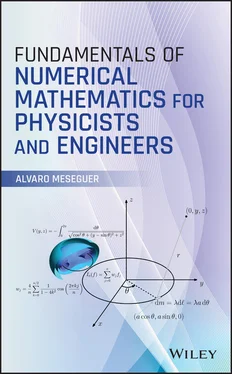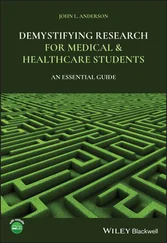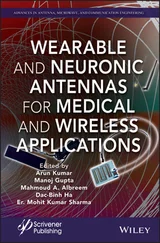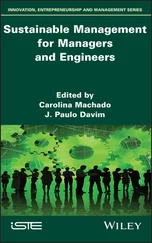241 237
242 238
243 239
244 240
245 241
246 242
247 243
248 244
249 245
250 246
251 247
252 248
253 249
254 250
255 251
256 252
257 253
258 254
259 255
260 256
261 257
262 258
263 259
264 261
265 262
266 263
267 264
268 265
269 266
270 267
271 268
272 269
273 270
274 271
275 272
276 273
277 274
278 275
279 276
280 277
281 278
282 279
283 280
284 281
285 282
286 283
287 284
288 285
289 286
290 287
291 288
292 289
293 290
294 291
295 292
296 293
297 294
298 295
299 296
300 297
301 298
302 299
303 300
304 301
305 302
306 303
307 304
308 305
309 306
310 307
311 308
312 309
313 310
314 311
315 312
316 313
317 314
318 315
319 316
320 317
321 318
322 319
323 320
324 321
325 322
326 323
327 324
328 325
329 326
330 327
331 328
332 329
333 330
334 331
335 332
336 333
337 335
338 336
339 337
340 338
341 339
342 340
343 341
344 342
345 343
346 344
347 345
348 346
349 347
350 348
351 349
352 350
353 351
354 352
355 353
356 354
357 355
358 356
359 357
360 358
361 359
362 360
363 361
364 362
365 363
366 364
367 365
368 367
369 369
370 370
371 371
372 373
373 374
374 375
375 376
376 377
377 378
378 379
Fundamentals of Numerical Mathematics for Physicists and Engineers
Alvaro Meseguer
Department of PhysicsUniversitat Polit`ecnica de Catalunya – UPC BarcelonaTech

This edition first published 2020
© 2020 John Wiley & Sons, Inc. All rights reserved.
All rights reserved. No part of this publication may be reproduced, stored in a retrieval system, or transmitted, in any form or by any means, electronic, mechanical, photocopying, recording or otherwise, except as permitted by law. Advice on how to obtain permission to reuse material from this title is available at http://www.wiley.com/go/permissions.
The right of Alvaro Meseguer to be identified as the author of this work has been asserted in accordance with law.
Registered Office
John Wiley & Sons, Inc., 111 River Street, Hoboken, NJ 07030, USA
Editorial Office
111 River Street, Hoboken, NJ 07030, USA
For details of our global editorial offices, customer services, and more information about Wiley products visit us at www.wiley.com.
Wiley also publishes its books in a variety of electronic formats and by print‐on‐demand. Some content that appears in standard print versions of this book may not be available in other formats.
Limit of Liability/Disclaimer of Warranty
While the publisher and authors have used their best efforts in preparing this work, they make no representations or warranties with respect to the accuracy or completeness of the contents of this work and specifically disclaim all warranties, including without limitation any implied warranties of merchantability or fitness for a particular purpose. No warranty may be created or extended by sales representatives, written sales materials or promotional statements for this work. The fact that an organization, website, or product is referred to in this work as a citation and/or potential source of further information does not mean that the publisher and authors endorse the information or services the organization, website, or product may provide or recommendations it may make. This work is sold with the understanding that the publisher is not engaged in rendering professional services. The advice and strategies contained herein may not be suitable for your situation. You should consult with a specialist where appropriate. Further, readers should be aware that websites listed in this work may have changed or disappeared between when this work was written and when it is read. Neither the publisher nor authors shall be liable for any loss of profit or any other commercial damages, including but not limited to special, incidental, consequential, or other damages.
Library of Congress Cataloging‐in‐Publication Data
Names: Meseguer, Alvaro (Alvaro Meseguer), author.
Title: Fundamentals of numerical mathematics for physicists and engineers /
Alvaro Meseguer.
Description: Hoboken, NJ : Wiley, 2020. | Includes bibliographical
references and index.
Identifiers: LCCN 2019057703 (print) | LCCN 2019057704 (ebook) | ISBN
9781119425670 (hardback) | ISBN 9781119425717 (adobe pdf) | ISBN
9781119425755 (epub)
Subjects: LCSH: Numerical analysis. | Mathematical physics. | Engineering
mathematics.
Classification: LCC QA297 .M457 2020 (print) | LCC QA297 (ebook) | DDC
518–dc23
LC record available at https://lccn.loc.gov/2019057703
LC ebook record available at https://lccn.loc.gov/2019057704
Cover Design: Wiley
Cover Image: Courtesy of Alvaro Meseguer, (background) © HNK/Shutterstock
Alvaro Meseguer, PhD, is Associate Professor at the Department of Physics at Polytechnic University of Catalonia (UPC BarcelonaTech), Barcelona, Spain, where he teaches Numerical Methods, Fluid Dynamics and Mathematical Physics to advanced undergraduates in Engineering Physics and Mathematics. He has published more than 30 articles in peer‐reviewed journals within the fields of computational fluid dynamics, and nonlinear physics.
Much of the material in this book is derived from lecture notes for two courses on numerical methods taught over many years to undergraduate students in Engineering Physics at the Universitat Politècnica de Catalunya (UPC) BarcelonaTech. Its volume is scaled to a one‐year course, that is, a two‐semester course. Accordingly, the book has two parts. Part Iis addressed to first or second year undergraduate students who have a solid foundation in differential and integral calculus in one real variable (including Taylor series,  notation, and improper integrals), along with elementary linear algebra (including polynomials and systems of linear equations). Part IIis addressed to slightly more advanced undergraduate or first‐year graduate students with a broader mathematical background, including multivariate calculus, ordinary differential equations, functions of a complex variable, and Fourier series. In both cases, it is assumed that the students are familiar with basic Matlab commands and functions.
notation, and improper integrals), along with elementary linear algebra (including polynomials and systems of linear equations). Part IIis addressed to slightly more advanced undergraduate or first‐year graduate students with a broader mathematical background, including multivariate calculus, ordinary differential equations, functions of a complex variable, and Fourier series. In both cases, it is assumed that the students are familiar with basic Matlab commands and functions.
The book has been written thinking not only of the student but also of the instructor (or instructors) that is supposed to teach the material following an academic calendar. Each chapter contains mathematical topics to be addressed in the lectures, along with Matlab codes and computer hands‐on practicals. These practicals are problem‐solving tutorials where the students, always supervised and guided by an instructor, use Matlab on a local computer to solve a given exercise that is focused on the topic previously seen in the lectures. From my point of view, teaching numerical methods should encompass not only theoretical lectures, addressing the underlying mathematics on a blackboard, but also practical computations, where the student learns the actual implementation of those mathematical concepts. There are certain aspects of numerical mathematics, such as conditioning or order of convergence , that can only be properly illustrated by experimentation on a computer. These hands‐on practicals may also help the instructor to efficiently assess the performance of a student. This can be easily carried out by using Matlab's publishfunction, for example. The end of each chapter also includes a short list of problems and exercises of theoretical (labeled with an A) and/or computational (labeled with an N) nature. The solutions to many of the exercises (and practicals) can be found at the end of the book. Finally, each chapter includes a Complementary Reading section, where the student may find suitable bibliography to broaden his or her knowledge on different aspects of numerical mathematics. Complementary lists of exercises can also be found in many of these recommended references.
Читать дальше


 notation, and improper integrals), along with elementary linear algebra (including polynomials and systems of linear equations). Part IIis addressed to slightly more advanced undergraduate or first‐year graduate students with a broader mathematical background, including multivariate calculus, ordinary differential equations, functions of a complex variable, and Fourier series. In both cases, it is assumed that the students are familiar with basic Matlab commands and functions.
notation, and improper integrals), along with elementary linear algebra (including polynomials and systems of linear equations). Part IIis addressed to slightly more advanced undergraduate or first‐year graduate students with a broader mathematical background, including multivariate calculus, ordinary differential equations, functions of a complex variable, and Fourier series. In both cases, it is assumed that the students are familiar with basic Matlab commands and functions.










